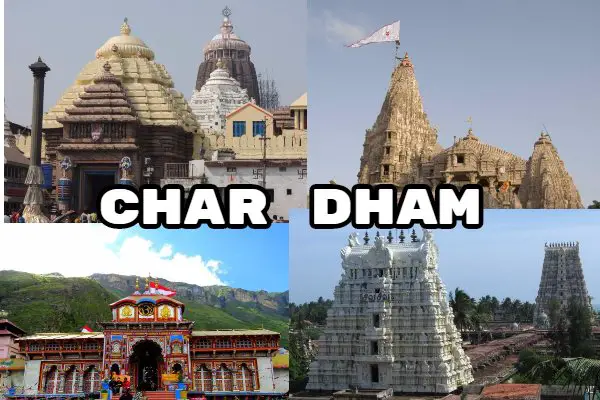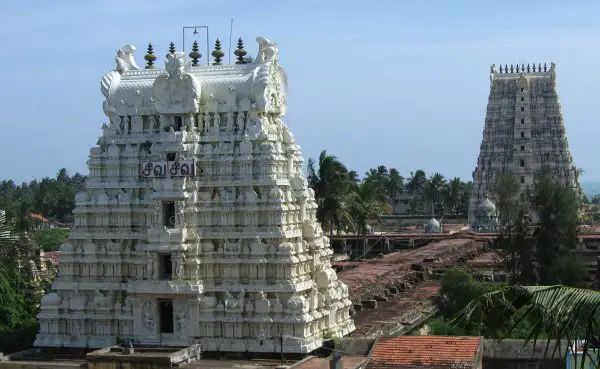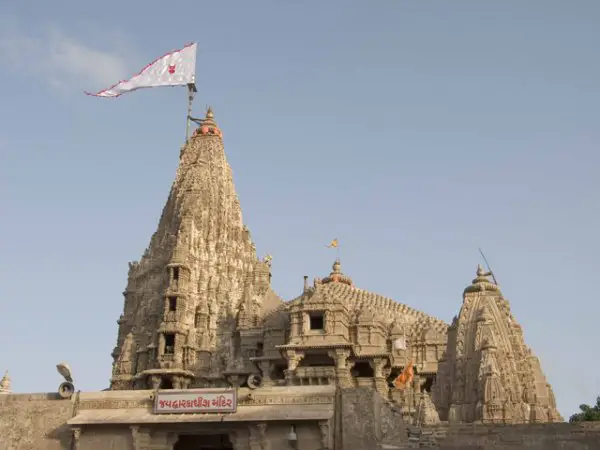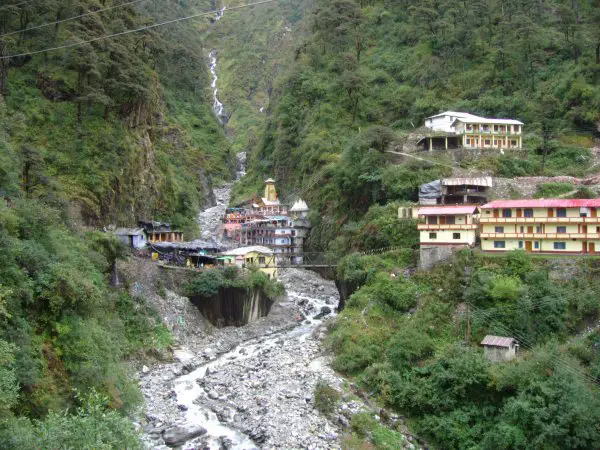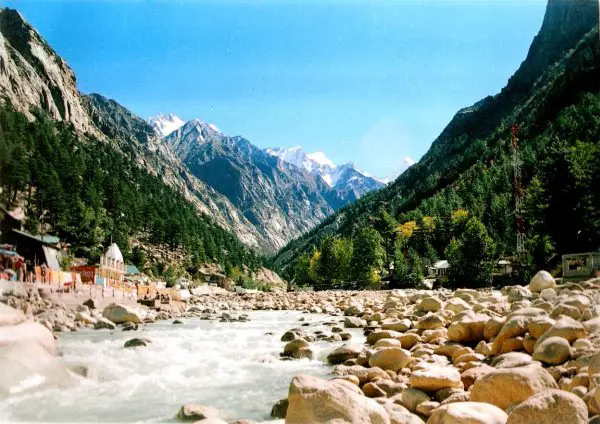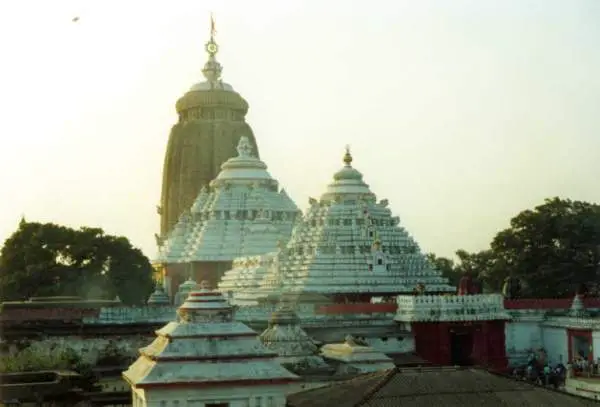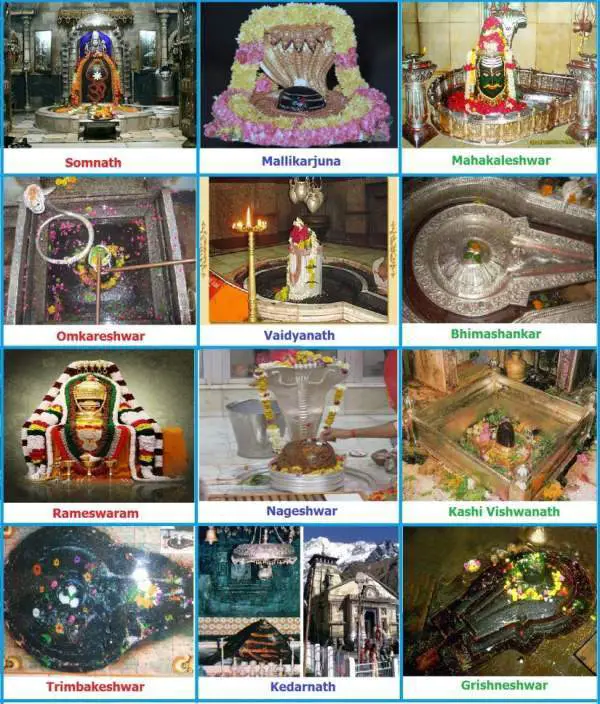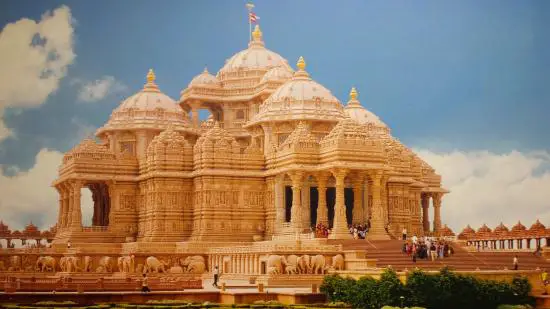India is the land of Gods and Goddesses.
And so, not surprisingly, India is replete with holy shrines, temples, and sacred pilgrim destinations that are spread across its vast boundaries.
Among these, the Char Dham Yatra is regarded as one of the most sacred pilgrimage destinations of the Hindus.
It’s a meeting with the Gods.
The Char Dham Yatra holds great significance for the devotees.
Today, we share with you the significance of Char Dham Yatra.
It’s a dream for all devout Hindus to partake in the sacred Char Dham Yatra at least once in their lifetime.
Table of Contents
What is Char Dham?
The Char Dham Yatra comprises four holy sites namely Badrinath, Puri, Rameshwaram, and Dwarka.
In fact, the Char Dham or four sacred pilgrims of India are located in four different directions of India.
Badrinath is in the North in Uttarakhand Region.
Puri or Jagannath Puri is in the East in Odisha.
Rameshwaram is in the South in Tamil Nadu.
Dwarka is in the West in Gujarat.
Hindus believe that by completing the Char Dham Yatra, one gets freed from all the sins did in the past and attains moksha or salvation.
The Char Dham Hindu pilgrimage circuit in India is believed to be the abodes of Hindu Gods.
Char Dham and Adi Shankaracharya Connection
In fact, Adi Shankaracharya founded four “Mathas” or monasteries as seats of Hindu religion at these four holy places comprising the Char Dham.
He founded the Sringeri matha in the south (on the Sringeri Hills), the Jyotir matha at Badrinath in the north, the Sharada matha on the Dwarka coast in the West, and the Govardhan matha at Puri in the east.
Char Dham Hindu Temples
Each of the Char Dham sites (Badrinath, Dwarka, Rameshwaram, and Puri) holds many temples and religious monuments, including one important temple as its main attraction.
At Badrinath, there is the Badrinath Temple whose presiding deity is Shri Badrinath (Lord Vishnu).
At Puri, the main attraction is the Lord Jagannath Temple whose presiding deity is Lord Jagannath. He is seated with his brother Balabhadra and sister Subhadra.
At Rameshwaram, the main attraction is the Rameshwaram Temple whose presiding deity is Lord Shiva. He is present in “shiva-linga” form and is named as Sri Ramanatha Swamy.
At Dwarka, the main attraction is the Dwarkadish (Lord Krishna) Temple, also known as Jagat Temple.
It is believed that the Char Dham is immensely liked by Lord Vishnu. It is said that He meditates at Badrinath, takes his bath at Rameshwaram, dines at Puri, and retires at Dwarka.
Char Dham and its Hindu Mythology
According to Hindu mythology, Badrinath came into prominence when Nar-Narayana, an incarnation of Lord Vishnu, did penance (tapas) there. During that time, this divine place was filled with Plum Trees.
In Sanskrit language, Plums are known as “Badri,” so this divine abode was named as “Badrika-Van” which means the forest of Plums.
The specific spot where Nar-Narayan meditated came to be known as Badrinath or Lord of Plum Forest.
All this took place in the ancient times of Sat-Yuga. So, Badrinath became the first Dham for all devotees.
The second place, Rameshwaram came into prominence in the Treta-Yuga during the period of Lord Rama.
It was Lord Rama who built a Shiva Lingam here and worshipped it for getting the blessings of Lord Shiva. In fact, Rameshwaram means “Rama’s Lord.” Lord Rama himself is an avatar of Vishnu.
The third place, the Dwarka Dham got its prominence in the Dwapara Yuga when Lord Krishna made Dwarka his residence instead of Mathura.
The fourth place, Jagannath Puri or Puri Dham has its mentions in the Skanda Purana, Brahma Purana, and other Puranas. It is said that Lord Jagannath was originally worshiped as Lord Neela Madhaba by a tribal chief (Savar King) named Viswavasu.
The Char Dham Pilgrimage
The Char Dham or four sacred pilgrimage centers form a picture-perfect square on India Map.
Badrinath and Rameshwaram are located on the same longitude while Puri and Dwarka on the same latitude, representing the north, south, east and west points of India (before coastlines changed).
Badrinath, Badrinath Temple (Uttarakhand, India): An abode of Nar-Narayan – an incarnation of Vishnu
Badrinath is situated in the Uttarakhand state of North India. It is amidst the Garhwal hills, on the banks of Alaknanda River.
The town is situated at an altitude of 6560m between the Nar and Narayan mountain ranges and in the shadow of Neelakantha peak.
Rameshwaram, Ramanathaswamy Temple (Tamil Nadu, India): An abode of Ramanatha Swamy – A God of Lord Ram
Rameshwaram is situated in in the state of Tamil Nadu in South India. It is located in the Gulf of Mannar, the very tip of the Indian Peninsula.
By Hindu mythology, it is the place from where Lord Ram built a bridge known as Ram Setu to Lanka.
The Ramanathaswamy Temple is devoted to Lord Shiva. It is here that Lord Rama worshiped Lord Shiva in the form of lingam.
The Shiva-Lingam here is also regarded as one of the twelve Jyotirlingas of Lord Shiva.
Dwarka, Dwarakadheesh Temple (Gujarat, India): An abode of Lord Krishna
Dwarka is situated in the west in the state of Gujarat.
This legendary city (Dwarka) was the home place of Lord Krishna.
It is believed that Dwarka was damaged and destroyed by the sea. In fact, the present Dwarka is the 7th such city to have been built in the area.
Puri, Jagannath Temple (Odisha, India): An abode of Krishna, Balabhadra, and Subhadra
Puri is situated in the east in the state of Odisha, India.
Puri is regarded as one of the oldest cities in India. It is located on the coast of Bay of Bengal.
The central deity at the Jagannath Temple is Shri Krishna worshiped as Lord Jagannath along with his brother Balabhadra or Balaram and sister Subhadra.
The temple is about 1000 years old and was built by Raja Choda Ganga Deva and Raja Tritiya Ananga Bhima Deva.
Every year, the Jagannath temple hosts the world famous Ratha Yatra or Chariot Festival.
Significance of Char Dham
The Char Dham Yatra holds an immense importance and significance amongst the Hindus.
It is believed that Char Dham Yatra washes away all the sins and opens doors for salvation or “moksha.” In fact, the Char Dham Yatra is considered a must for every Hindu for getting salvation.
So, every devout Hindu wishes to visit these four holy places at least once in his or her lifetime.
Moreover, lacs of Hindus visit these holy places every year.
The term “Char Dham” was first coined by famous Indian philosopher and Yogi Shri Adi Shankaracharya.
The literal meaning of “Char Dham” is holy destinations or four abodes of God.
So, Hindus take the Char Dham tour for washing away all their sins and getting salvation.
It is even advised that every Hindu must undertake the journey to Char Dhams at least once in their lifetime.
The Char Dham has a great significance in Hindu religion.
According to Hindu mythology, Shri Adi Shankaracharya acquired freedom from reincarnation at the Badrinath Dham.
It is believed that after completing the Char Dham Yatra, one gets absolute serenity of the mind.
Char Dham Yatra helps us to make spiritual progress.
The Char Dham Yatra inspires us to lead a pious life.
One is blessed with happiness and peace of mind.
It helps us in getting rid of bad habits.
It paves the way for “Gyan” – knowledge, “Bhakti” – devotion, and “Vairagya” – self-realization.
So, one must endeavor to take on Char Dham Yatra.
About Chota Char Dham
The Chota Char Dham Yatra is a relatively shorter but very important pilgrimage circuit which is located in the Garhwal part of Uttarakhand.
It consists of Badrinath, Kedarnath, Yamunotri, and Gangotri.
All these four abodes are located in the foothills of the Himalayas.
Yamunotri and Gangotri are located in the Uttarkashi district of Uttarakhand.
Kedarnath is in Rudraprayag district, and Badrinath is situated in the Chamoli district of Uttarakhand.
The name “Chota” was added in the mid 20th Century to differentiate the original Char Dhams (comprising of Badrinath, Rameshwaram, Dwarka, and Puri Jagannath).
A holy trip across the Chota Char Dham is considered sacred by the Hindus who aspire to visit these places once in their lifetime.
Each Chota Char Dham site finds their mention in Hindu religious texts such as Puranas, Vedas and also in tales associated with epics such as Mahabharata and Ramayana.
The doorway to this holy journey is Yamunotri.
Next destination in Chota Char Dham Yatra is Gangotri.
After that, the pilgrims visit Kedarnath and finally Badrinath Dham.
In fact, the holy shrines of Chota Char Dham represent all the three major sects of Hinduism.
The Vaishnav shrine is located at Badrinath. The Shaiva temple is located at Kedarnath. The two Shakta temples are at Gangotri and Yamunotri.
The immense beauty of the Himalayas welcomes devotees at all these holy places during the Chota Char Dham Yatra.
This holy journey can be quite hard, but the immense enthusiasm and energy of pilgrims win over any hardships encountered on their way to Chota Char Dham sites.
The Char Dham Yatra holds a very important place in the Hindu religion. The Chota Char Dham Yatra is no less important.
They are the doorway to happiness, peace of mind, serenity, and bliss.
Every devout Hindu inspires to make these Yatras at least once in their lifetime. It is believed that Char Dham Yatra washes away all the sins committed in the past and helps to attain salvation.
It is the abode of Hindu Gods!

